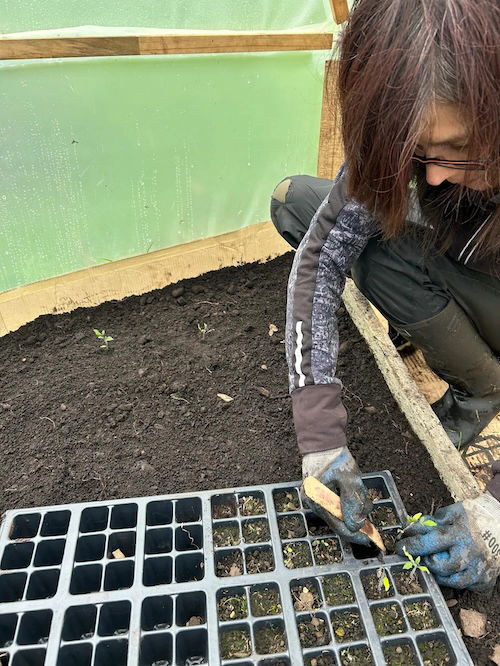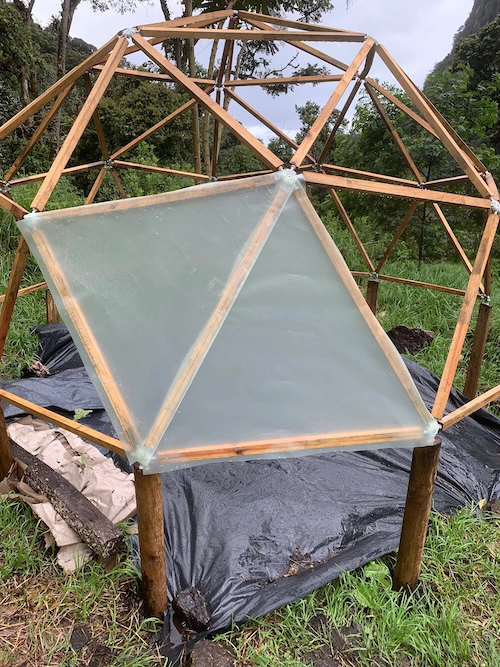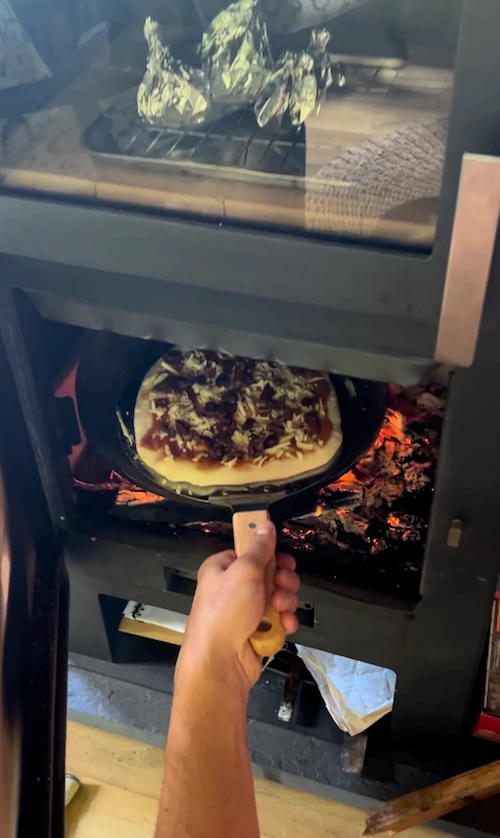Taking the power back
(⚠️🤖 This post translation from the original text in Spanish was assisted using Llama 3 running locally with Ollama on a solar powered laptop)
Hello again!
Mafe y Francisco here sharing a new story from the Andean forest.
A few days ago, we were reading a post about job motivation. The author mentioned that masons felt great satisfaction with their work. The reasons: they can see the result of their work, they know they’re creating social value, and they are constantly updating themselves. Beyond how orthodox or academic the study was, the conclusions made us reflect on the power of manual labor and direct contact with the results of what we do. Sometimes in the city, one feels that behind the keyboard, screen, and internet, a lot of work is being done, but little is being achieved. It seems like we don’t have direct power over our reality, as if everything was mediated by layers of abstraction invented by someone else. Today, we want to share our reflections on doing things with your hands and how, through them, you can interact with objects and beings in the real world and regain a certain lost power.
Planting (and harvesting)
We would be doing poorly if we didn’t start with what we do most in the reserve. Our work with plants, as we’ve shared with you before, is very intuitive. Neither of us is a botanist, nor a forestry engineer, and what we do comes from a mix of common sense with a bit of reading and advice from people we trust.
Sowing a seed in the earth and weeks or months later seeing it sprout is incredibly powerful. Perhaps the seed is doing all the work, but being the catalyst makes you a part of this creative process. Our hands have the power to collect the seed, sow it, and give it the means for it to germinate and become a plant from which, in the future, with a bit of luck and lots of patience, we can feed ourselves and other animals.

Something similar happens when we plant saplings, which involves several steps and care like acclimating seedlings for months, then carrying them to the mountain, clearing the grass to make way for planting, and finally sowing them. But that’s not all - afterwards will come years or decades of walking back and forth to supervise the planted trees. This is the endless pleasure (and sometimes sorrow when they die) of watching them grow, bloom, produce fruit and seeds, and slowly become the home of epiphytic plants and a food source for caterpillars, birds, insects, and mammals.
The same hands that planted those plants will have the pleasure of feeling the trunk, branches, and leaves of the mature tree years later. What greater power can there be?
Building
Recently we’ve ventured into building, something for which we weren’t prepared, but took on with a bit of hesitance. The construction of our greenhouse has taken several months. Initially we had planned to have a master builder take care of the difficult part (building the structure foundations), but we decided to research a bit and with a couple of blank sheets and a calculator in hand, we decided to build the whole thing ourselves.
To add to the challenge, we wanted to have a geodesic dome, which seemed to harmonize better with the landscape and offered greater stability than a traditional structure - which was necessary for us given the strong rain and winds in the canyon where we are. For the geodesic structure, we turned to the guys at Build With Hubs, British designers who crafted the connectors and provide calculators to make life easier for people who want to build domes at home. After several visits to the hardware store, we had the connectors, columns, and wood joints - now we just needed to insulate the joints and clear the land where we would be building the dome. On top of that, like with our house, we weren’t going to level the ground, so we had to calculate the height of each column from the base and ensure they were even - a much harder task than it sounds. Once we finished the structure, we had to install the roofing: 40 plastic UV-Grade triangles that we had to cut and then install one by one on each face of the dome.

After three months of continuous work, we have our first tomato plants in the greenhouse. We still need to install the door, finish setting up the seed beds and a irrigation system, but we built it from scratch and learned things that we would have missed if someone else had done it for us.
Cooking with fire (pizza baking)
We’ve baked pizza for several years, long before we came to live in the mountain. As far back as 2013, we’ve been baking bread and pizzas, and at one point we even had our own natural yeast cultivation (also known as sourdough starter, but the real deal). Out here in the reserve, we don’t have a bread oven, but we do have a chimney-style stove that we’ve used for several pizza experiments.
Pizza baking in Yátaro involves several tasks, from gathering fuel to preparing the dough. For the fuel, we head up into the mountains to collect fallen branches or cordoncillo (Piper barbatum) trunks and then chop them with an axe. The day before, we prepare a pre-ferment called “biga”, which gives flavor to the dough through extended fermentation. On the day of the feast, we mix and knead the dough early in the morning to give it good rising time and relaxation for the gluten. Meanwhile, we prepare the pizza sauce (we dream of making it with our own tomatoes one day) and toppings. For the baking part, we place the pizza stone inside the chimney stove on top of a bed of coals supported by two bricks. The idea is to reach extremely high temperatures, similar to those in wood-fired pizza ovens.

We’re still perfecting the technique, but if there’s one thing that’s present throughout the entire process, it’s the direct contact with the wood, the ingredients, and the dough, always working with our hands.
The educational process takes us away from concrete reality and brings us closer to abstractions. In twelve years, we go from playing in the sandbox to solving differential calculus equations. We’re not questioning the value of formal education, but perhaps it conditions us unintentionally to see only the world of ideas and concepts. And in that process, we forget or downplay our basic abilities, not just to survive, but to be actors within the natural world.
There’s something basic but beautiful in recovering the power to do things for ourselves, to act within that natural world and know the effects of our actions on it. When the distance between our hands and reality shortens enough to act and participate in a creative process that’s tangible, we regain confidence in ourselves.
Thank you again for reading us. Share your opinions and ideas with us,
Mafe y Francisco